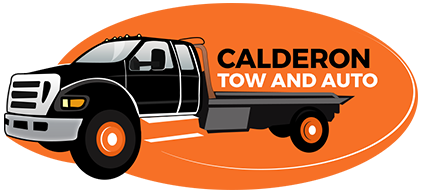Water incidents pose unique challenges for both drivers and towing professionals. Whether due to heavy rains, floods, or accidental submersion, vehicles caught in water require specialized towing and recovery services. Considering this, we at Calderon Tow & Auto would like to discuss the procedures, challenges, and safety considerations involved in towing and recovering vehicles from water incidents.
Understanding Towing Challenges
Towing and recovering vehicles from water incidents demand a distinct set of skills and equipment. Water adds an extra layer of complexity to the already intricate process of vehicle retrieval. Submerged vehicles can be hidden beneath murky waters, making it difficult to assess the extent of damage and plan an effective recovery strategy. Additionally, water currents, debris, and unseen obstacles beneath the surface can pose significant risks to both the towing professionals and the vehicle being recovered.
Specialized Towing Equipment & Techniques
Towing companies specializing in water recovery invest in specialized equipment to ensure a safe and efficient operation. Amphibious tow trucks equipped with crane systems and winches capable of underwater operation are essential for navigating the challenges posed by submerged vehicles. These vehicles are designed to handle the added weight and resistance encountered in water, allowing for a controlled and strategic recovery process. Divers are often an integral part of the water recovery team. Trained professionals can assess the condition of the vehicle, attach tow lines, and secure it for extraction. Communication between the divers and the towing professionals is crucial to coordinate the recovery efforts effectively.
Safety First
Safety is paramount in any towing operation, and water recoveries are no exception. Towing professionals must undergo specialized training to handle the unique risks associated with water incidents. This includes understanding water currents, assessing vehicle stability underwater, and employing safety measures to protect both the recovery team and the environment. Risk assessments are conducted before initiating any water recovery operation. Factors such as water depth, visibility, and weather conditions are carefully evaluated to determine the safest approach. Additionally, the use of personal protective equipment, including diving suits and safety harnesses, is standard protocol to minimize the risks associated with water recoveries.
Environmental Considerations
Water incidents not only pose risks to individuals involved in the recovery process but also raise environmental concerns. Towing companies must adhere to environmental regulations and take precautions to prevent the release of pollutants into water bodies. Containment measures, such as the use of absorbent materials and oil spill booms, are employed to mitigate environmental impact.
Towing & Roadside Assistance in San Mateo, San Francisco, Daly City & Colma, CA | Greater Bay Area of California
Towing and recovery from water incidents require a unique set of skills, equipment, and safety measures. Specialized training, coupled with state-of-the-art equipment, enables towing professionals to navigate the challenges posed by submerged vehicles effectively. By prioritizing safety, adhering to environmental regulations, and staying abreast of industry best practices, towing companies can ensure a reliable and responsible approach to water recoveries. Through these efforts, they not only assist drivers in distress but also contribute to the preservation of safety and environmental integrity in their communities. When you need towing services in San Francisco and surrounding areas, call Calderon Tow & Auto and let us assist you.

